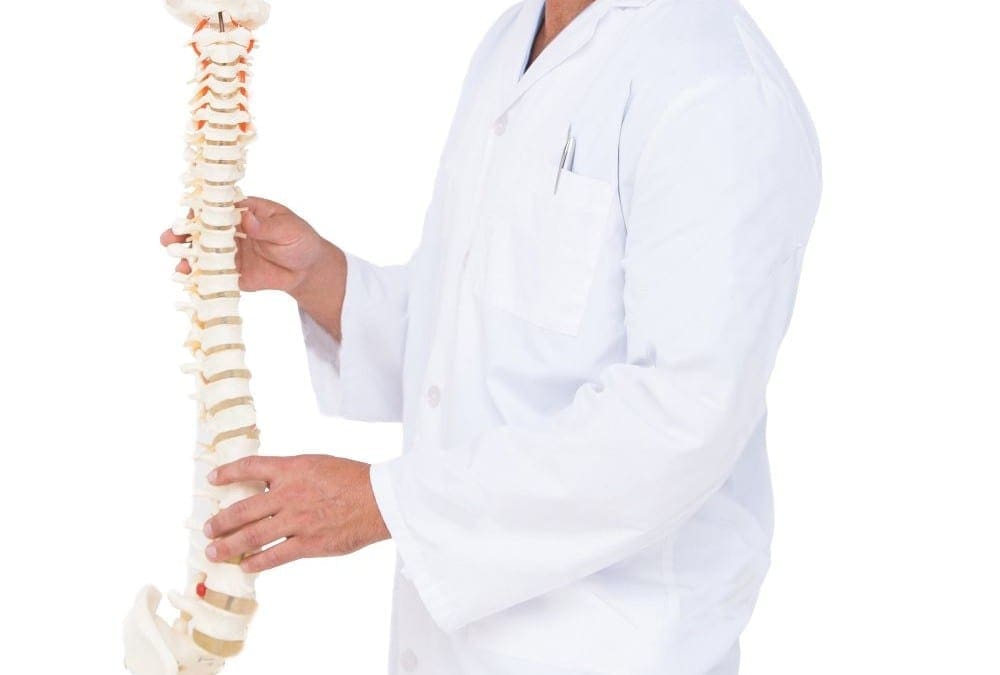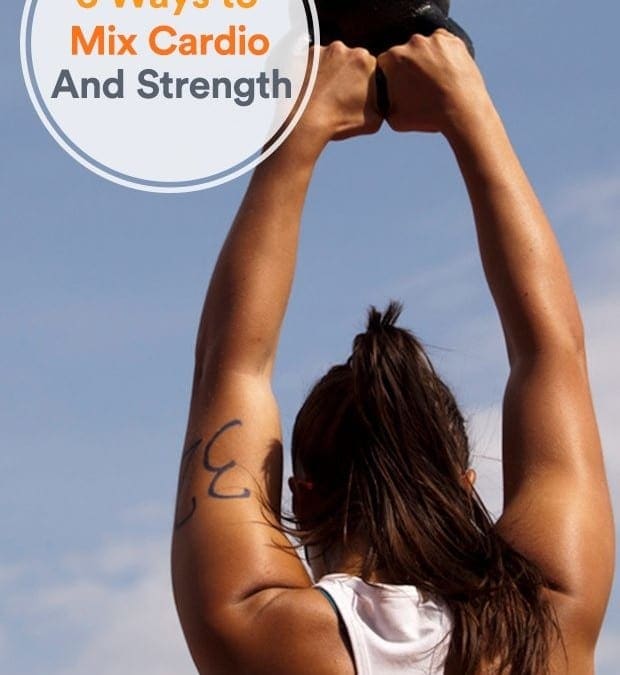Wellness
Clinic Wellness Team. A key factor to spine or back pain conditions is staying healthy. Overall wellness involves a balanced diet, appropriate exercise, physical activity, restful sleep, and a healthy lifestyle. The term has been applied in many ways. But overall, the definition is as follows.
It is a conscious, self-directed, and evolving process of achieving full potential. It is multidimensional, bringing together lifestyles both mental/spiritual and the environment in which one lives. It is positive and affirms that what we do is, in fact, correct.
It is an active process where people become aware and make choices towards a more successful lifestyle. This includes how a person contributes to their environment/community. They aim to build healthier living spaces and social networks. It helps in creating a person’s belief systems, values, and a positive world perspective.
Along with this comes the benefits of regular exercise, a healthy diet, personal self-care, and knowing when to seek medical attention. Dr. Jimenez’s message is to work towards being fit, being healthy, and staying aware of our collection of articles, blogs, and videos.

by Dr Alex Jimenez DC, APRN, FNP-BC, CFMP, IFMCP | Chiropractic, Chronic Back Pain, Integrative Functional Wellness, Integrative Medicine, Wellness
Doctor of Chiropractic, Dr. Alexander Jimenez examines people that see�a chiropractor and their reduced�usage of opioids and other types of drugs.
The draft Guidance for Prescribing Opioids for Chronic Pain, issued in December 2015 by the U.S. Centers for Disease Control and Prevention, included �many complementary and alternative therapies (e.g., manipulation, massage, and acupuncture)� among its recommended non-pharmacologic approaches. However, when the final Guidance was released three months later, manipulative therapy and its 75,000 licensed chiropractic practitioners was not directly referenced. A recent study from James �Jim� Whedon, DC, MS, pictured, suggests that the CDC harmed its mission with its excision of explicit reference to manipulation. Patients using chiropractors were less likely to use prescription opioids.
Whedon is currently a researcher at the Southern California University of Health Sciences, and is co-chair of the Research Working Group of the Academic Collaborative for Integrative Health. He is a relatively rare resource in the integrative health community, as a specialist in diving into huge data sets of insurers and seeking to extract useful information. Whedon is a veteran of arguably the most important research center in this type of work, The Dartmouth Institute at the Geisel Medical School at Dartmouth College.
Whedon�s research began with awareness that �little is known about the comparative effectiveness of non-pharmacological care for low back pain as a strategy for reducing the use of opioid analgesics.� What is well known, as Whedon shared in his poster and presentation at the 2016 conference of the Academy of Integrative Health and Medicine, is that patients with such pain are swimming in opioid prescriptions. Whedon�s presentation included a Baskin-Robbins-like list of 39 opioid varieties. He postulated that opioid use would be less likely among those receiving chiropractic care.

Association Between Utilization Of Chiropractic For Back Pain & Use Of Prescription Opioids
Preliminary results of a health claims study,� Whedon reports what he found through examining the New Hampshire All Payer Claims Database.� Of roughly 33,000 adults registered as having low back pain, slightly over a third saw a chiropractor. Of these, 38 percent had at least one opioid prescription. Of those who did not see a chiropractor, 61 percent had at least one opioid prescription.
The core question that interested Whedon was how many prescription fills the two sets of insured patients received. Those whose opioid prescription was integrated with chiropractic care had an average of 3.9 fills. Those who did not receive chiropractic manipulative therapy averaged 8.3 fills per patient. He estimated that the average per person opioid charges were $88 for those using chiropractors. The figure was $140, or 60 percent higher for those not using chiropractic care.
Whedon�s conclusions were, first, that the likelihood of filling a prescription for a high-risk drug of any type was 27 percent lower. Secondly, the likelihood of filling a prescription for an opioid analgesic was 57 percent lower in the chiropractic-using population.
�These are preliminary results,� Whedon cautioned. �We intend to analyze the data further, applying robust methods to reduce the risk of bias that can result from other differences between people who use chiropractic care and those who do not.�
Comment: While Whedon takes care to note that �no causal inferences can be made,� the associations should be of real interest to the CDC and other policy makers. A follow-up study might attempt to compare the whole costs of the chiropractic-using population and those who didn�t.� These costs could include, on the one hand, the cost of chiropractic treatment, and on the other, the costs of other medications or treatment that may be prescribed for those on longer-term opioid treatment who may end up cycling into the addiction.

Call Today!

by Dr Alex Jimenez DC, APRN, FNP-BC, CFMP, IFMCP | Fitness, Health, Wellness
Boxing is all the rage right now—everyone from models like Gigi Hadid and Ashley Graham to celebs like J.Lo and Demi Lovato have picked up the powerful workout as their go-to way to stay fit. And they’re definitely on to something. Boxing is great way to up your heart rate and tone your body from head to toe.
It’s no coincidence that so many people who love boxing rock killer physiques. Boxing (as well as the challenging conditioning work that goes along with training) strengthens and sculpts the entire body. That’s because boxing isn’t just about aggressively throwing punches—it’s an amazing total-body workout that tightens and tones everything from your arms to your core.
RELATED: 5 Heart-Pumping Samba Dance Moves That Burn Fat
That said, stepping into a boxing gym or class can be a bit intimidating if you’re a total newbie. So Health teamed up with two-time boxing world champion Chris Algieri to get the lowdown on must-know boxing basics. Watch this video to learn everything from how to get in fighter stance, throw a 1-2 punch (also known as a jab-cross), and master other classic moves, such as upper cuts and hooks. Whether you’re a boxing novice or just looking to perfect your form, here’s what you need to know for a total knockout workout.

by Dr Alex Jimenez DC, APRN, FNP-BC, CFMP, IFMCP | Anti Aging
Researchers say they’ve found an enzyme in mice associated with obesity and a loss of exercise capacity in midlife, suggesting that the discovery could eventually lead to new weight-loss medications.
The team at the U.S. National Heart, Lung, and Blood Institute (NHLBI) gave one group of mice a drug that inhibits the activity of the enzyme called DNA-PK. Another group of mice wasn’t given the drug. Both groups were fed a high-fat diet.
The group that received the inhibitor had 40 percent less weight gain than the other group, according to the study in the journal Cell Metabolism.
The findings challenge current ideas about why people gain weight as they age, the researchers said.
“Our society attributes the weight gain and lack of exercise at midlife [approximately 30-60 years] primarily to poor lifestyle choices and lack of willpower,” said study lead author Dr. Jay Chung, head of the institute’s Laboratory of Obesity and Aging Research.
The researchers said the average weight gain between age 20 and 50 is about 30 pounds, even though the amount of food a person consumes generally decreases during this time.
Chung and his colleagues looked for biochemical changes in animals during midlife and found that DNA-PK increases in activity with age. Also, the researchers said the enzyme helps the conversion of nutrients to fat.
“This study shows that there is a genetic program driven by an overactive enzyme that promotes weight gain and loss of exercise capacity at midlife,” Chung said in a NHLBI news release.
“Our studies indicate that DNA-PK is one of the drivers of the metabolic and fitness decline that occurs during aging, which makes staying lean and physically fit difficult and increases susceptibility to metabolic diseases like diabetes. The identification of this new mechanism is very important for improving public health,” he said.
Obesity is linked with a number of chronic diseases, including type 2 diabetes and heart disease.
“The study opens the door to the development of a new type of weight-loss medication that could work by inhibiting DNA-PK activity,” Chung said.
However, it’s important to note that research that seems promising in animals doesn’t always translate well to humans.
For now, middle-aged people fighting obesity need to focus on calorie reduction and increased exercise, the researchers recommended.

by Dr Alex Jimenez DC, APRN, FNP-BC, CFMP, IFMCP | Diets, Fitness
The idea that diet could have a role to play in preventing the signs of asthma is starting to gain ground, with studies highlighting certain deficiencies in patients or warning against the consumption of certain foods. On World Asthma Day, May 2, Relaxnews spoke to Dr. Bertrand Delaisi, a pediatric pulmonologist at Clinique Marcel Sembat in Boulogne-Billancourt, France, for an overview of what’s currently known on the subject.
The prevalence of asthma has increased considerably in recent decades, in parallel with changes in lifestyles and dietary habits, tending towards diets rich in carbohydrates and fat, and low in fiber.
As well as pollutants, allergens, passive smoking and air pollution, allergy specialists are increasingly interested in how diet can promote or modify the development of asthma on a physiopathological level.
Eating ham, cured sausage or smoked meats at least four times a week could aggravate the symptoms of asthma over time, concludes a study carried out by researchers at Inserm, the French National Institute of Health and Medical Research, published in January in the medical journal Thorax.
On the contrary, consuming fiber may influence the gut flora and could reduce inflammation in the bronchial tubes. A diet rich in fruit and vegetables and vitamin C — and especially vitamin D (calf’s liver, soy, egg yolks) — could, therefore, help limit the risks of asthma, according to Dr. Bertrand Delaisi, a pediatric pulmonologist at Clinique Marcel Sembat in Boulogne-Billancourt, France.
The same goes for omega-3 fatty acids, present in oily fish and other foods (walnuts, canola oil), which can relieve inflammation, including in the respiratory airways. People whose diets are rich in omega-3 have a lower risk of suffering from asthma than those whose intake is limited. They could also be beneficial to people who already suffer from the condition.
Foods containing quercetin could reduce the frequency of asthma attacks, as this antioxidant flavonoid is an anti-inflammatory. Studies carried out in vitro found that quercetin inhibited the liberation of inflammatory substances by mast cells, which play a role in allergic reactions, mirroring certain anti-asthma medications. This antioxidant is found in onions, mustard oil, tea and apples.
An estimated 300 million people worldwide suffer from asthma.

by Dr Alex Jimenez DC, APRN, FNP-BC, CFMP, IFMCP | Fitness, Health, Wellness
Make the most of your rest days
Help your body recover with these self-care strategies from pros.
Eat well and hydrate: “You should be feeding your body nutrient-dense foods, like lean proteins and veggies,” says Rosante. “And be sure to drink plenty of water.”
Use a foam roller: “Imagine knots on a rubber band�trigger points are like that, and exercising can inflame them,” notes Rosante. “Rolling out breaks them up so you cna move better.”
Walk around: “Long walks help increase blood flow to the muscles,” explains Rosante, “bringing oxygen to fix damaged tissue.”
Don’t binge on junk food: “A rest day is not a cheat day,” notes Holder.
Don’t stay up all night: “Sleep is key for your body to recover, repair�muscles, and reset the brain,” says Holder. “Not getting enough can increase food cravings and push your body into chronic stress mode, making it harder to meet your goals.”
Don’t train�duh!: Sounds simple, but it can be challenging. Proper rest optimizes the body for future workouts. And don’t worry: “No gains will be lost in one or even two days,” adds Jon-Erik Kawamoto, founder of JK Conditioning in Newfoundland, Canada. To put it another way: Namaste…in bed.

by Dr Alex Jimenez DC, APRN, FNP-BC, CFMP, IFMCP | Fitness, Health, Wellness
When the going gets tough, yoga. That’s our mantra this spring—and this flow is proof that deep breaths and a little movement can work wonders on your energy levels. It’s led by Tiffany Cruikshank, founder of Yoga Medicine and an expert in the restorative power of yoga. The sequence is meant to wake you up, and help you find your center; so you finish your practice calmer than before, but also invigorated. The routine will also help you feel more connected to your body, as you challenge your muscles and build stamina.
While yoga doesn’t raise your heart rate quite like high-intensity interval training, or HIIT, it does come with its own set of stellar health benefits. Regular yoga sessions can help to reduce migraines, improve sleep quality, and even boost your sex life, thanks to poses that strengthen the pelvic floor muscles (and in turn make your orgasms bigger and better).
RELATED: 3 Yoga Poses to Relieve Stress and Anxiety
Of course yoga has the power to change your body for the better too. The ancient practice can lead to longer, leaner muscles, since it stretches your limbs while building strength simultaneously.
Want to get it on the action? Watch the video to follow along as Cruikshank guides you through a yoga flow that will recharge your batteries stat. It’s perfect for vinyasa novices as well as longtime yogis. Whether you do this routine first thing in the morning, or right in the middle of your afternoon slump, it will leave you feeling healthier and happier, guaranteed. And if you just can’t get enough of Tiffany, visit YogaGlo for more of her classes.

by Dr Alex Jimenez DC, APRN, FNP-BC, CFMP, IFMCP | Fitness, Health, Wellness
This article originally appeared on DailyBurn.com.
Resistance training and cardio exercise can indeed co-exist. In fact, blending them together creates the ideal time-saving gym session. All you have to do is make a few intensity-amplifying tweaks to your existing strength workout and it can drive up your heart rate, burn more calories and improve your cardiovascular health, says New York City-based trainer Laura Miranda, DPT, CSCS, exercise physiologist. Get started on getting more from your workout by following these six strategies that marry weights and cardio. You just might find you’re having more fun, too.
RELATED: 6 Killer Cardio Workouts That Don’t Involve Running
6 Tips for Turning Up the Cardio on Your Strength Workout
1. Vary your rest.
The first way to spike your heart rate while strength training: Perform each move back to back with as little rest as possible — that is, while still maintaining good form. Miranda prefers a ladder approach to accomplish this goal. After the first round of resistance exercises, rest for 20 seconds. On the second set, rest for 15 seconds; and the third, pause for a 10-second break. As your body gets less and less time to recover, it taxes your aerobic system, she explains. Keep in mind, because you can’t lift at max weight with this many sets, it’s a good goal for fat loss, rather than strictly strength gains.
RELATED: 12 Brilliant Meal Prep Ideas to Save Time
2. Hold weights in both hands.
Rather than putting all your effort into single-arm movements for exercises like curls, rows or extensions, pick up two dumbbells or kettlebells. Then, go to town. Doing upper-body bilateral movements — like bicep curls with both hands moving at the same time — increases your heart rate more than when focusing on one arm at a time, according to a 2017 study in The Journal of Strength & Conditioning Research.
RELATED: 5 Sports-Inspired Drills That Totally Count as Cardio
3. Pepper in plyometrics.
Explosive movements — think squat jumps and jumping lunges — are super effective and efficient for cranking up your cardio, while still building muscle. To maximize the payoff of these powerful moves, perform at least 15 reps of each exercise. This can keep your heart rate elevated for up to 50 minutes post-exercise, according to one study.
Miranda also recommends combining plyos with a strength and coordination move to lessen some of the jarring impact on your body. For example: Do a dumbbell lateral lunge, followed by a bear crawl, then end with broad jumps. Take a brief rest before cycling through those three exercises again.
RELATED: 3 Plyometric Moves That Turn Up the Burn
4. Lighten your load.
In a traditional strength workout, you’d pick up a weight heavy enough that you could only do a few reps for up to 45 seconds, says Miranda. But to hit the sweet spot where lifting turns more aerobic, opt for lighter weights that allow you to perform a set for one to two minutes. You might even drop the weight altogether and work for longer periods (i.e. go from a weighted squat to simply bodyweight squats). Or, grab a set of five- to eight-pound weights and perform a move like dumbbell uppercuts for one minute. Trust us, it will burn.
RELATED: 3 Quick HIIT Workouts for Beginners
5. Try a two-fer.
Why do a squat or a bicep curl or an overhead press when you can be super efficient and do all three at once? Compound movements like this one require you to use more muscle groups, which gives you a greater metabolic boost, says Miranda. Even better, these multi-move exercises test your coordination. Some others to add to your exercise repertoire: a push-up with row, reverse lunge with triceps extensions, curtsy lunge with bicep curl or a glute bridge with chest press.
RELATED: 3 Exercises to Sculpt Your Entire Body
6. Go beyond everyday exercises.
No doubt you’ve done a burpee or 10. After all, they’re used in many workouts because they’re an efficient way to get your heart rate up between strength sets. “When you choose movements that your body is not used to doing — like getting on and off the floor, as you do for a burpee — it enhances the difficulty of your workout,” says Miranda. (Typically, we’re used to simply sitting, standing and walking.) A burpee requires you to use all major muscle groups at once, which is probably why research shows this move is nearly as good as bicycle sprints in terms of gaining cardiovascular benefits.
Another similar way to enhance the cardio challenge: Do moves that work your body in different planes of motion, says Miranda. For instance, a forward lunge, followed by a side lunge, then wrap it up with a backward lunge. “Our bodies are not used to moving in those sequences,” she says. Wood chops or 180 squat jumps will also do the trick. So not only will you feel your muscles getting fatigue, but you’ll breath heavy while you’re at it. A single workout for strength and cardio…you’re welcome.














